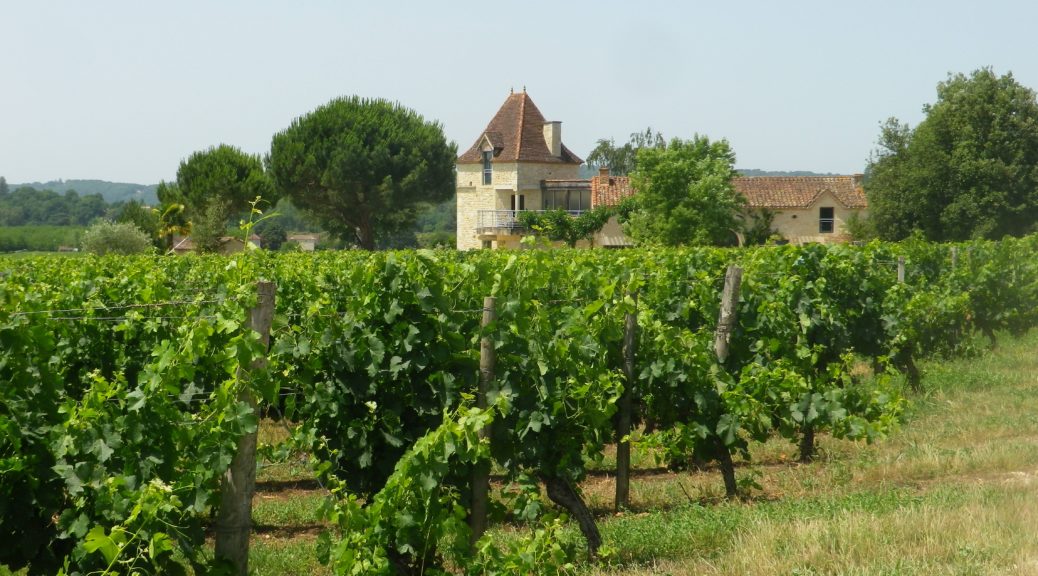It should have been a bike ride with family. But we couldn’t find nearby bikes to rent. Then due to time and impending weather constraints, it had to be right then and there. So, in the end, it had to be a hike of the trail we intended to bike. And as we went along, I realized this circuit trail truly was ideal for bicycling as a family with young children (tweens, at the oldest), or with family members out of shape (or practice) biking.
From the shady parking area at the trailhead, which provided a great spot for a group preparing to embark on an adventure, the trail went along D8, the main road following the around the peninsula that is Anglars-Juillac, as defined by one of many loops created by the Lot River. The Lot River is famous for its sinuous course on its way to the Garonne, and its many twists and turns offer countless perspectives on the river and its landscapes. (If you want to make an easy half-mile detour to see the river, it is best to do so within a half mile of the trail’s start, following D67, before heading away from the water, and into the vineyards covering more than half of this peninsula.)
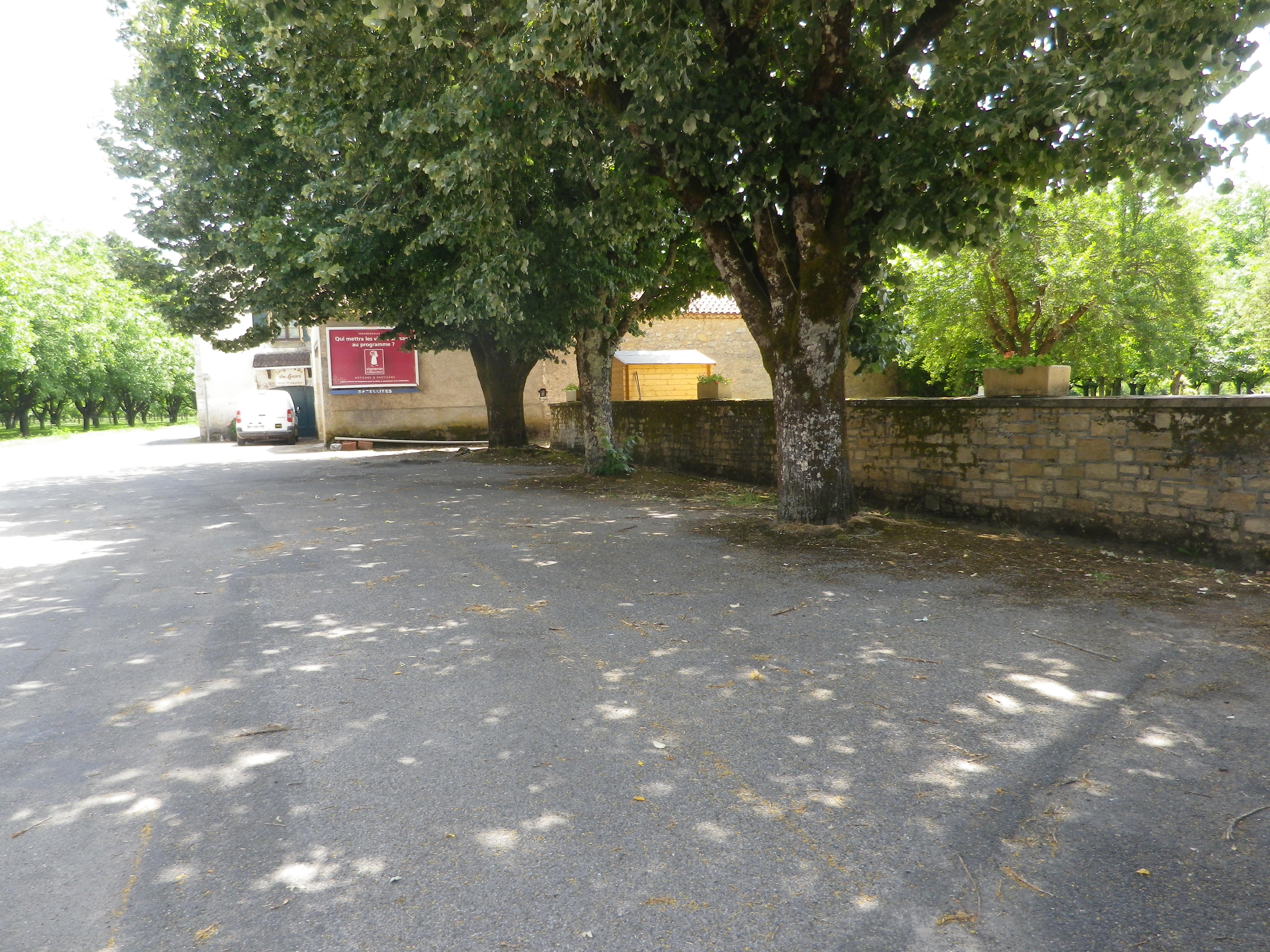
Immediately after the D67 intersection with D8, the trail turned right into the vineyards. This is what I had come to see: the vineyards of the famous “Black” wine of Cahors. This circuit covers one of the two major types of terroir on which the vines are planted in this appellation: the alluvial terroirs. These are the vineyards planted in the successive terraces formed by the ancient ebb and flow of the river. Relatively deep deposits of silt and sand overlay a limestone sub-stratum. These areas are mostly flat, another reason why this is a family-friendly biking circuit. (It is true also in nearby Parnac, which has a similar circuit. See the Nutshell here.)
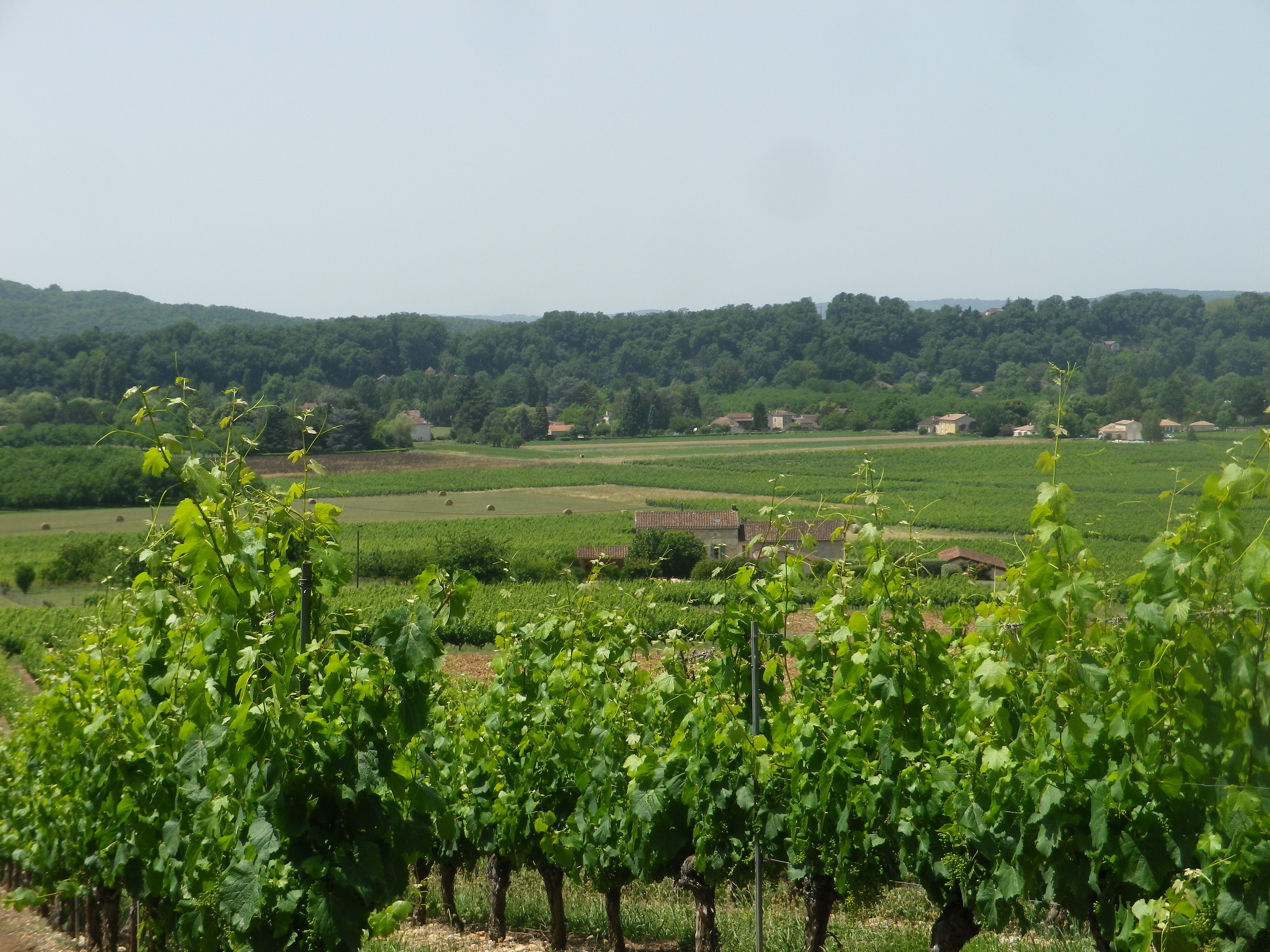
The trail headed toward cliff faces in the near distance. These rose up from the river until they culminated in high limestone plateaus, known as Causses. They were covered by woodlands, and looked verdant in the intense sunshine. Much of this part of southwestern France is covered by limestone Causses, carved through by the Lot and other rivers. In many places, these resemble canyons more than river valleys, and produce a dramatic effect.
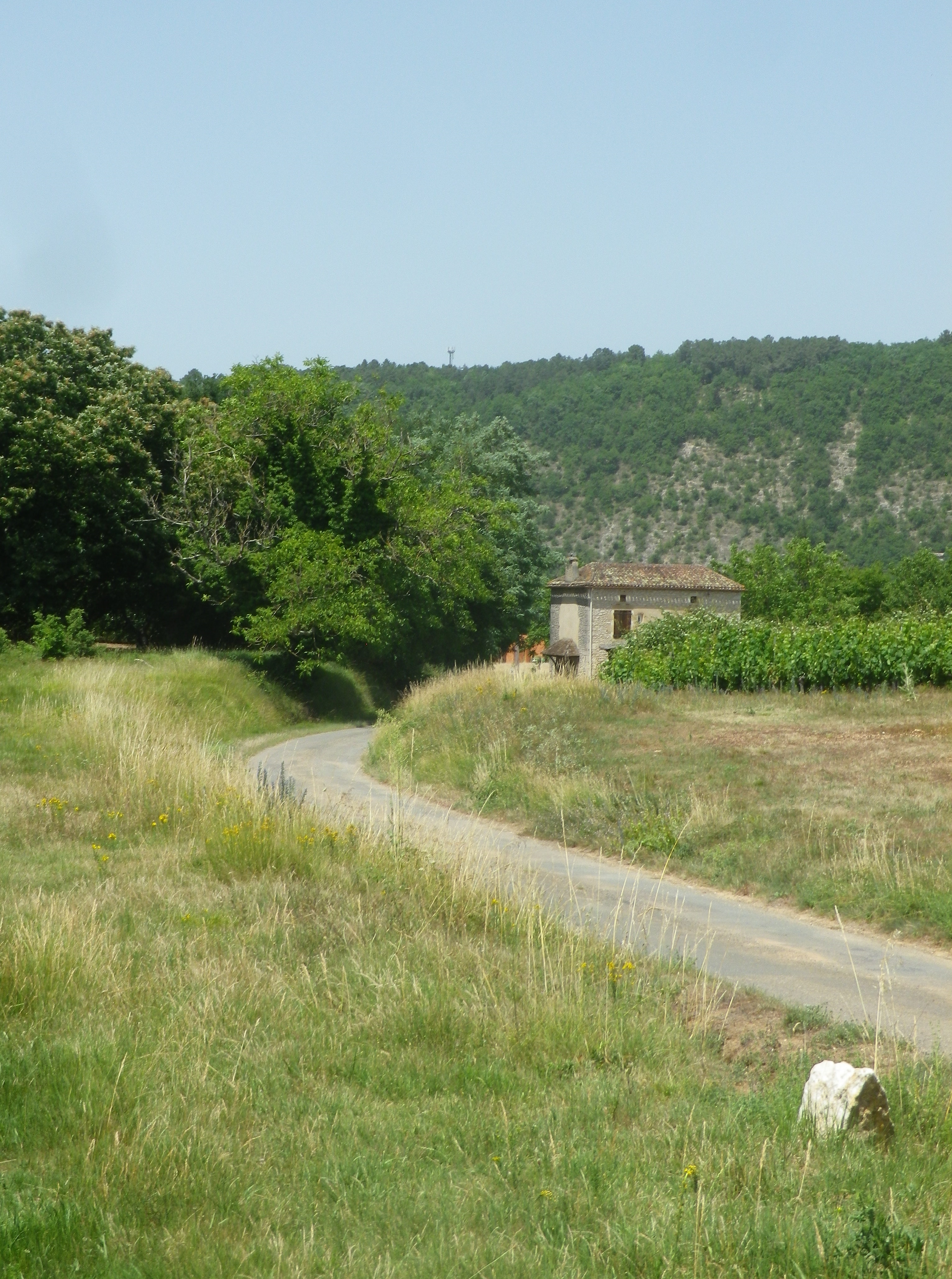
The trail passes by a couple of wineries. The largest of these was the Chateau Leret Monpezat. It was not far from the Chateau d’Anglars, which looked romantically dark and mysterious surrounded by in its old, dense tree canopies. Some of the building dates to the thirteenth century, although most of what you see dates to the sixteenth. (It is privately owned, and not often opened to the public.)
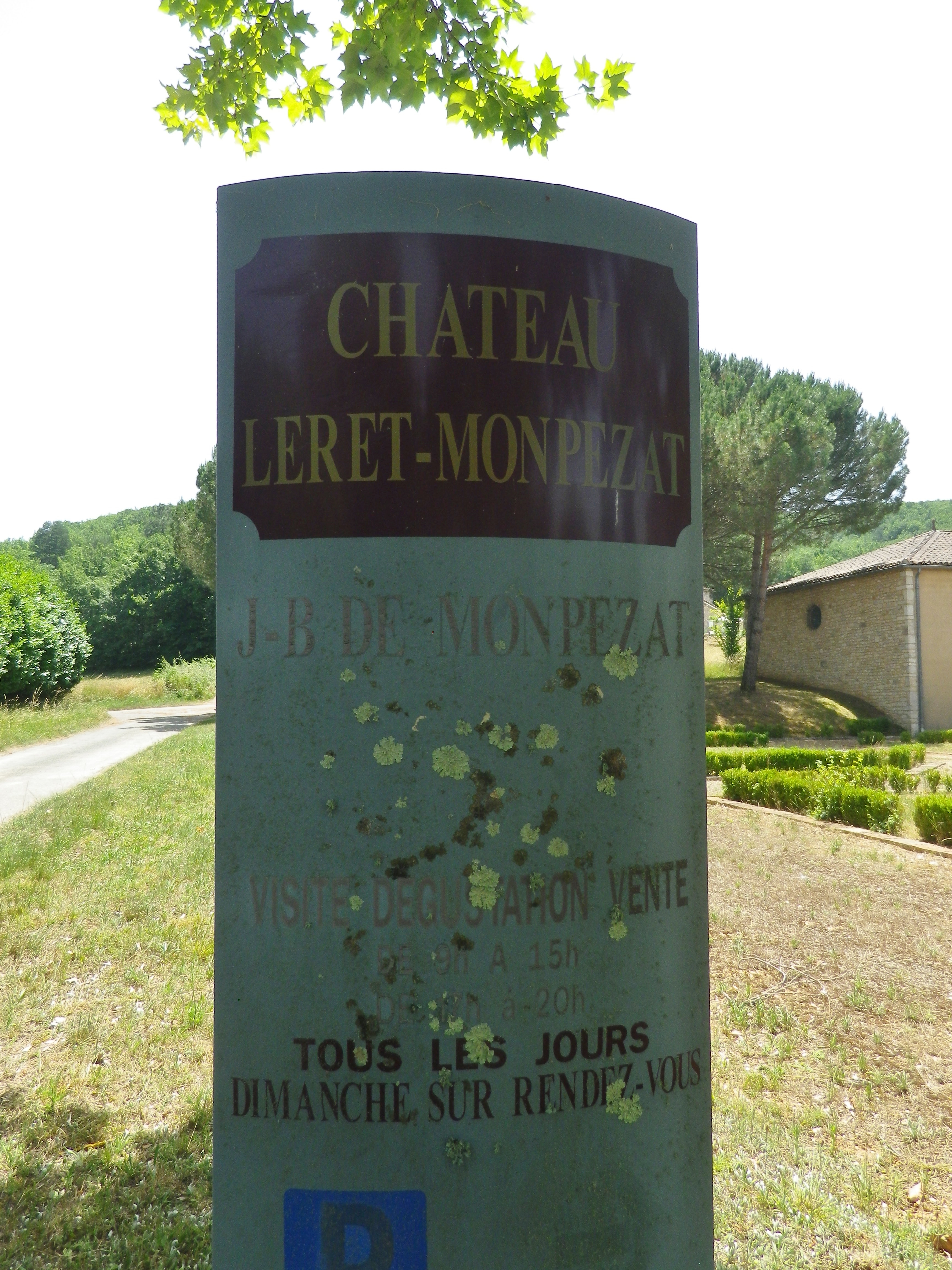
Back onto the normally quiet D8 for a few hundred meters, the trail passes the front of the Chateau, and turns into the hamlet of Anglars. Its old church had an interesting feature: a mur-clocher, or a wall belltower. This architectural feature seems to be fairly unique to this part of southwestern France. I had never seen one before, until passing through the nearby town of Castelfranc, and further south by Gaillac.
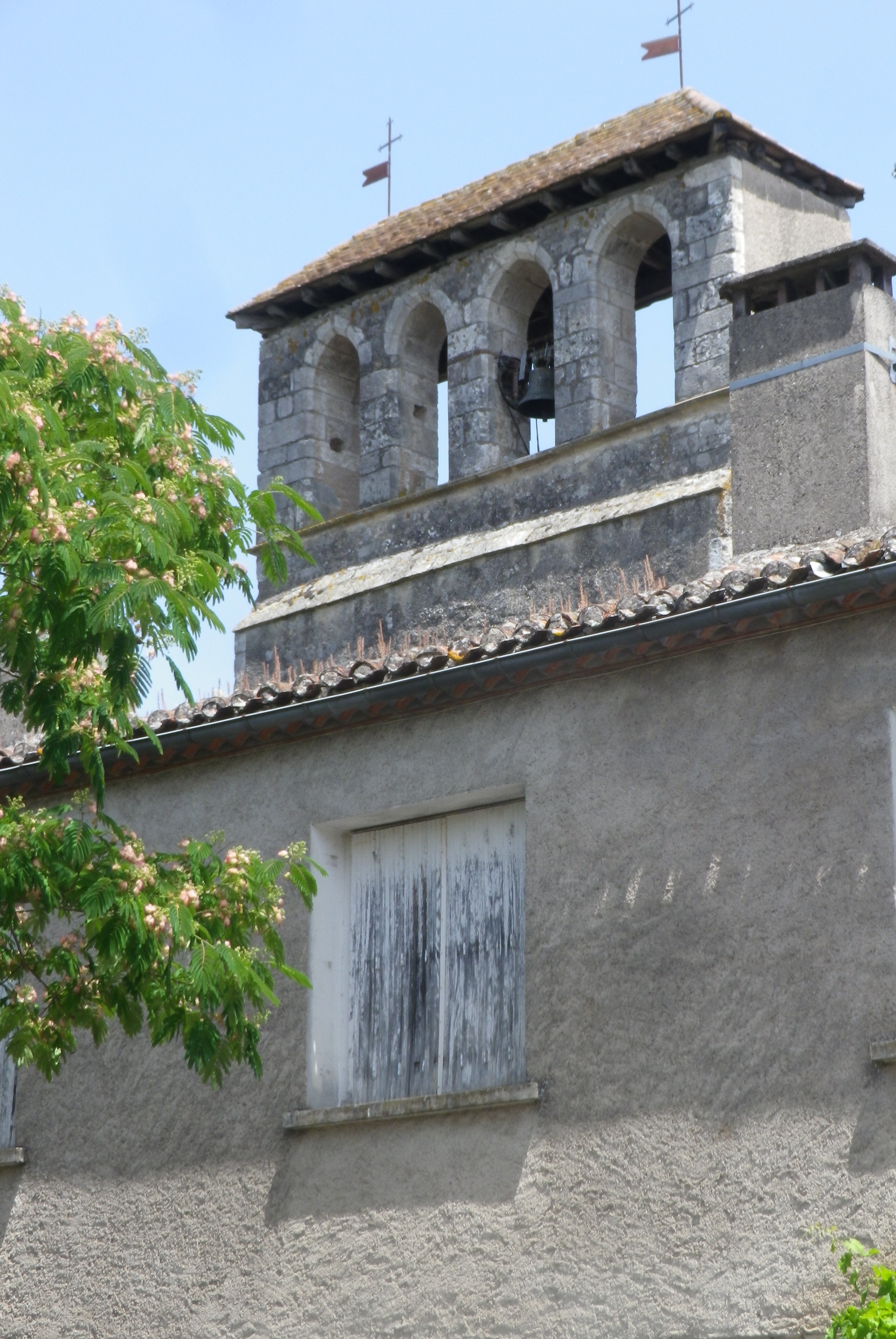
The circuit then continued through vineyards, coming to the only elevation on the trail. (If you head clockwise, as suggested, you descend the small incline.) It was a wonderful place to stop to admire the scenery all around. Not only that, but in the heat of a summer day, the cicadas, the stillness and the dryness, all remind you that you are in southern France.
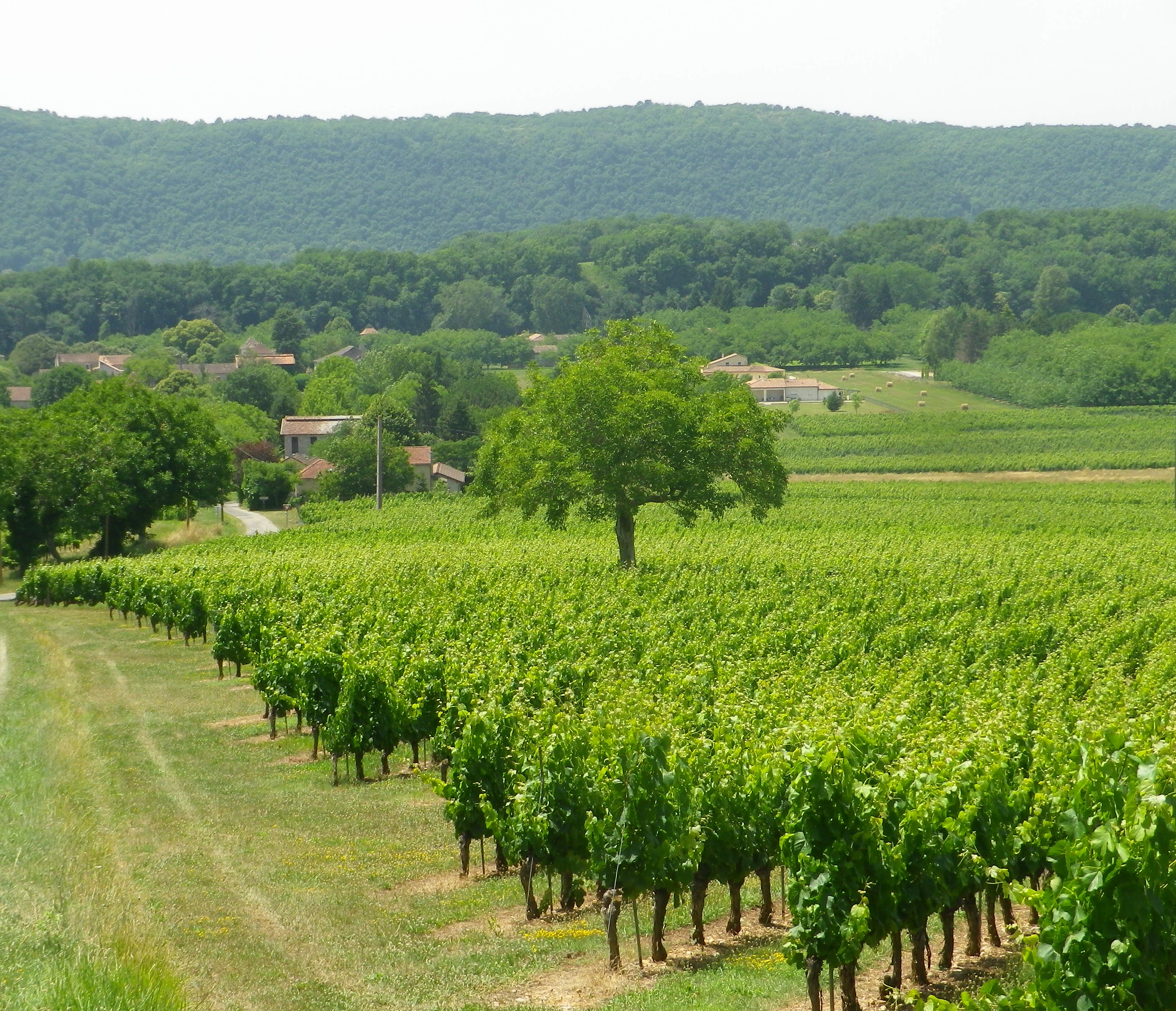
Once back to the start point, you realize that the time went too quickly: less than 90 minutes for hiking, and 45 minutes for biking. Except for the almost complete lack of shade, this was a great circuit for a family excursion that all could enjoy, and complete, together.
